You searched for: seo7天上首頁【TG飞机:@bapingseo】谷歌推广必备软件【TG电报:@bapingseo】斯里兰卡google优化【Telegram:@bapingseo】30个娱乐平台网站下载MG游戏中心官方下载?kS0sCe/Bi0r2K.html
<< Previous | Displaying results 81-90 of 396 for "seo7天上首頁【TG飞机:@bapingseo】谷歌推广必备软件【TG电报:@bapingseo】斯里兰卡google优化【Telegram:@bapingseo】30个娱乐平台网站下载MG游戏中心官方下载?kS0sCe/Bi0r2K.html" | Next >>
-
Althammer
ArticleThe Germans established the Althammer camp in September 1944. It was a subcamp of Auschwitz. Read more about the camp's history and conditions there.
-
The 84th Infantry Division during World War II
ArticleThe 84th Infantry Division participated in major WWII campaigns and is recognized for liberating two Neuengamme subcamps, Hannover-Ahlem and Salzwedel, in 1945.
-
Haviva Reik
Media EssayHaviva Reik was one of 32 Jewish parachutists from Palestine who volunteered to join the British army and infiltrate German-occupied Europe. Reik was sent to Slovakia on a mission to aid Jews during the Slovak nationa...
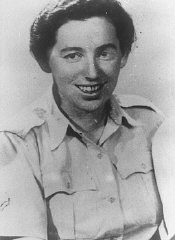
-
Lodz ghetto
FilmThe German army occupied Lodz, Poland, in September 1939. From early February 1940, Jews in Lodz were forced to move to a designated ghetto area, which was sealed on April 30, 1940. This German footage illustrates conditions during winter in the Lodz ghetto. Winter in the ghettos aggravated existing hardships, depleting already sparse supplies of food and fuel.
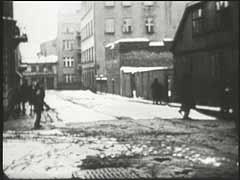
-
Conditions in the Warsaw ghetto
FilmThe Nazis sealed the Warsaw ghetto in mid-November 1940. German-induced overcrowding and food shortages led to an extremely high mortality rate in the ghetto. Almost 30 percent of the population of Warsaw was packed into 2.4 percent of the city's area. The Germans set a food ration for Jews at just 181 calories a day. By August 1941, more than 5,000 people a month succumbed to starvation and disease.
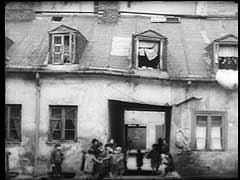
-
Conditions in the Warsaw ghetto
FilmThe Nazis sealed the Warsaw ghetto in mid-November 1940. German-induced overcrowding and food shortages led to an extremely high mortality rate in the ghetto. Almost 30 percent of the population of Warsaw was packed into 2.4 percent of the city's area. The Germans set a food ration for Jews at just 181 calories a day. By August 1941, more than 5,000 people a month succumbed to starvation and disease.
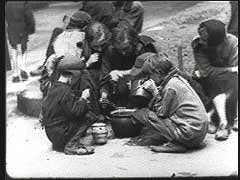
-
Lion Feuchtwanger in New York
PhotoAuthor Lion Feuchtwanger in New York, November 17, 1932. Feuchtwanger's 1930 novel Erfolg (Success) provided a thinly veiled criticism of the Beer Hall Putsch and Hitler's rise to leadership in the Nazi Party. He was targeted by the Nazis. After the Nazi takeover on January 30, 1933, his house in Berlin was illegally searched and his library was plundered during his lecture tour in the United States.
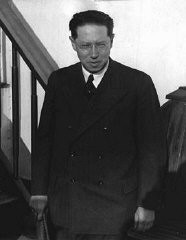
-
Ernest Hemingway
PhotoPortrait of Ernest Hemingway by Helen Pierce Breaker. Paris, France, ca. 1928. In 1933, Nazi students at more than 30 German universities pillaged libraries in search of books they considered to be "un-German." Among the literary and political writings they threw into the flames were the works of Ernest Hemingway.
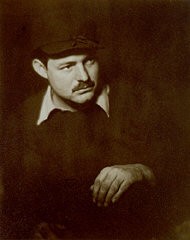
-
Cover of A Farewell to Arms
PhotoCover of Ernest Hemingway's A Farewell to Arms. (1929 cover. Princeton University Library.) In 1933, Nazi students at more than 30 German universities pillaged libraries in search of books they considered to be "un-German." Among the literary and political writings they threw into the flames during the book burning were the works of Ernest Hemingway.
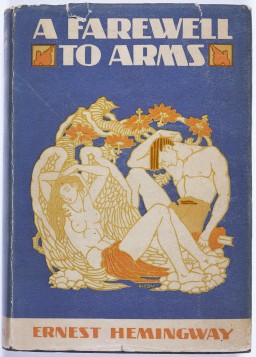
-
Hemingway on a safari
PhotoAmerican novelist Ernest Hemingway on safari, ca. 1933. In 1933, Nazi students at more than 30 German universities pillaged libraries in search of books they considered to be "un-German." Among the literary and political writings they threw into the flames were the works of Ernest Hemingway.

